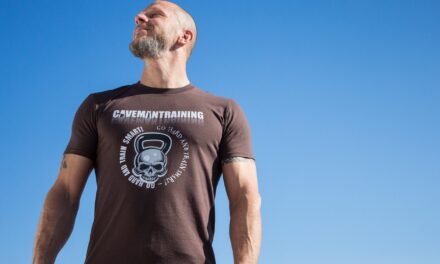Reaching the age of 50 often brings a sense of achievement, wisdom, and the desire to focus more keenly on personal health and fitness. Working out at 50 years old isn’t just about staying active; it’s a celebration of what your body can still achieve and a commitment to enhance your quality of life. The notion that hitting 50 means slowing down is outdated. In fact, this age can mark the beginning of a journey towards a healthier, more energized you.
Embarking on or continuing a fitness journey at this stage in life might feel daunting to some. There’s the unavoidable reality of aging: perhaps your body doesn’t recover as quickly as it used to, or maybe you’re dealing with health issues that weren’t there in your 30s or 40s. However, these aren’t reasons to avoid exercise; rather, they’re factors to consider as you adapt and tailor your fitness routine. The key is to approach working out with an understanding of your body’s needs and limitations, and with a spirit of adaptability and determination.
In this comprehensive guide, we will delve into the essentials of working out at 50, offering practical advice, professional insights, and motivational tips to help you build an effective and sustainable fitness routine. Whether you’re a seasoned athlete or a beginner, this article aims to inspire and empower you to achieve your fitness goals, redefine your limits, and enjoy the vast benefits of staying active in your 50s and beyond.
So, let’s embark on this journey together and explore how you can maintain a vigorous and fulfilling lifestyle, proving that age is truly just a number when it comes to fitness and well-being.
Navigating the World of Fitness After 50
Understanding the Changes in Your Body
As we age, our bodies undergo transformations that can affect our approach to physical activity. Muscle mass tends to decrease, metabolism slows down, and the risk of chronic conditions increases. It’s important to recognize these changes not as hindrances but as factors to guide your fitness strategy. Adjusting your workout intensity and types of exercises can help accommodate your body’s evolving needs.
Creating a Balanced Workout Routine
A balanced approach to working out at 50 includes a mix of cardiovascular exercises, strength training, flexibility routines, and balance activities. Cardio exercises like walking, cycling, or swimming enhance heart health and endurance. Strength training, crucial at this age, counters muscle loss and strengthens bones. Flexibility exercises such as yoga or Pilates improve mobility, while balance exercises help prevent falls.
Starting Safely and Setting Realistic Goals
If you’re new to exercise or returning after a break, it’s essential to start slowly to avoid injury. Set realistic goals that align with your current fitness level and gradually increase the intensity and duration of your workouts. Consulting with a healthcare professional before starting a new exercise regimen is always a wise decision, especially if you have pre-existing health conditions.
Listening to Your Body
At 50, tuning into your body’s signals becomes more important than ever. Pay attention to any discomfort or pain during exercises, and don’t hesitate to modify movements as needed. Rest and recovery are just as important as the workouts themselves. Ensure you’re getting adequate sleep and allowing time for your muscles to recover and rebuild.
Remember, the journey to fitness at 50 is as much about mental health as it is about physical health. Stay patient with your progress, and celebrate the small victories along the way.
Conclusion
Working out at 50 can be an immensely rewarding experience, bringing not only physical benefits but also a sense of mental well-being and accomplishment. Here are some key takeaways to keep in mind:
- Embrace Adaptability: Be open to modifying your fitness routine as your body changes. Embracing adaptability is key to a sustainable workout plan.
- Focus on Holistic Health: Your fitness journey should include physical, mental, and emotional health. Incorporate activities that address all aspects of well-being.
- Stay Consistent: Consistency is crucial for achieving long-term results. Find activities you enjoy to maintain motivation.
- Seek Support: Joining fitness groups or enlisting the help of a personal trainer can provide the support and accountability needed to stay on track.
By embracing these principles, you can make your 50s and beyond some of the healthiest and most active years of your life. Remember, age should not
be a barrier to fitness; rather, it’s an opportunity to explore new ways of staying active and healthy.






